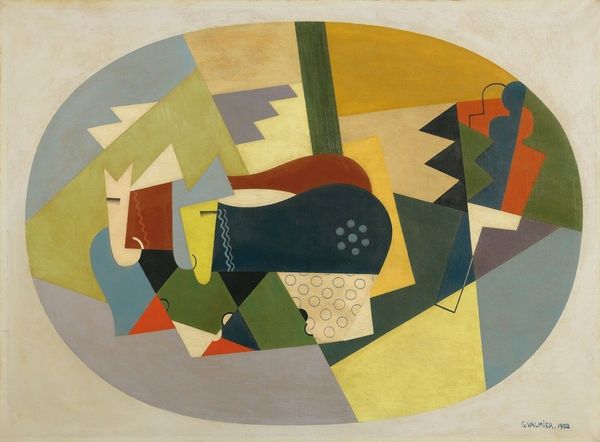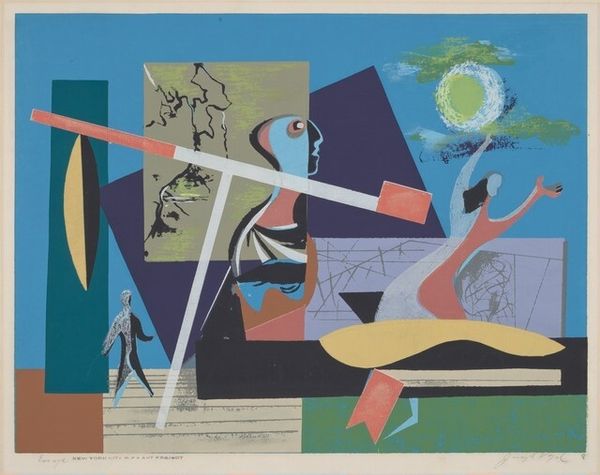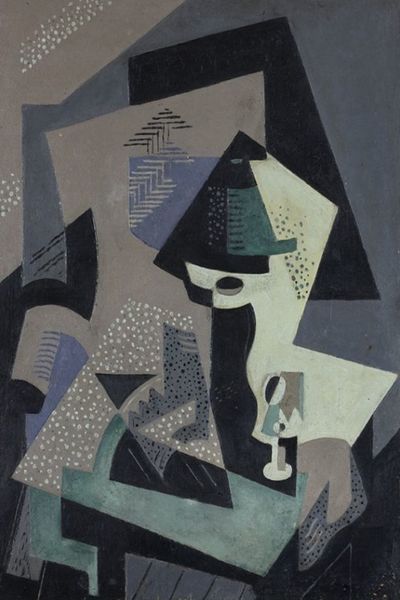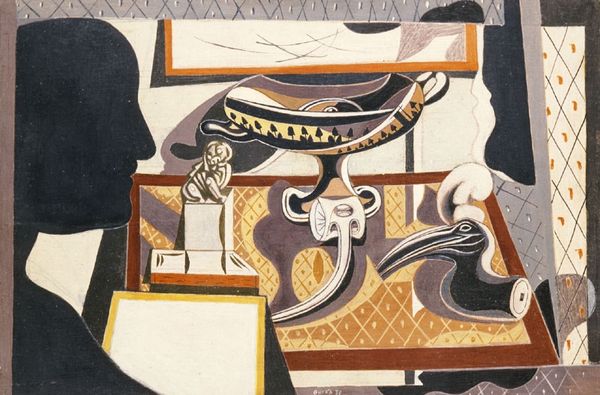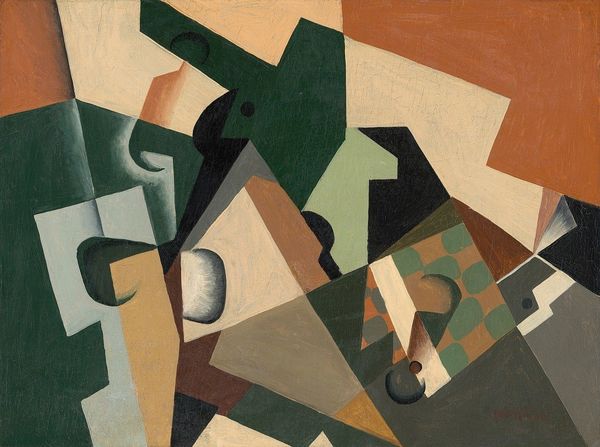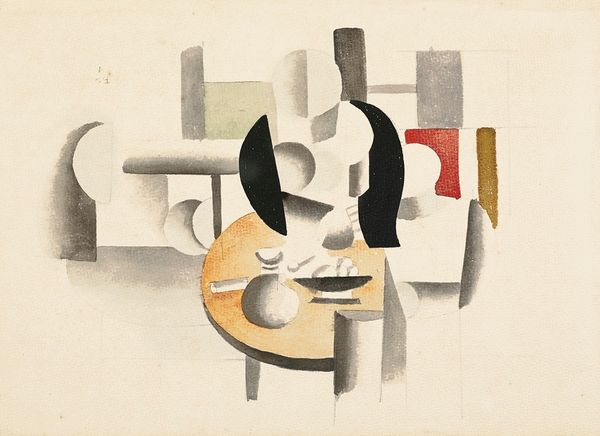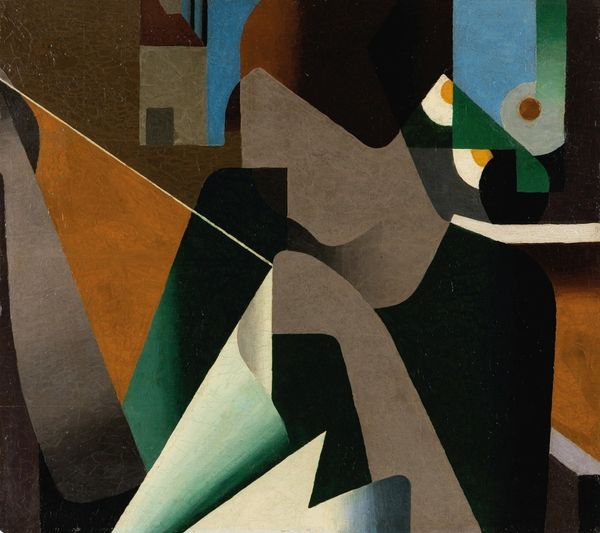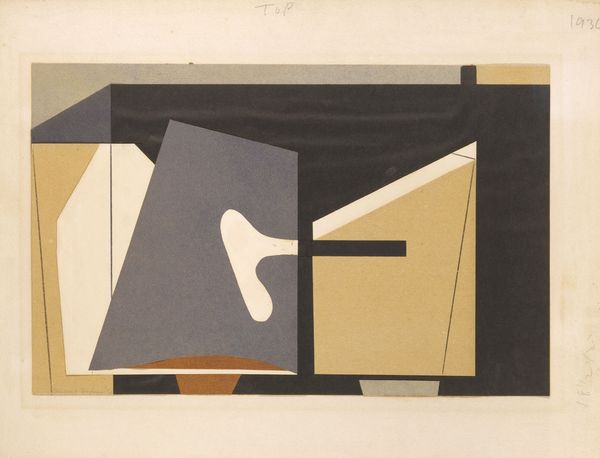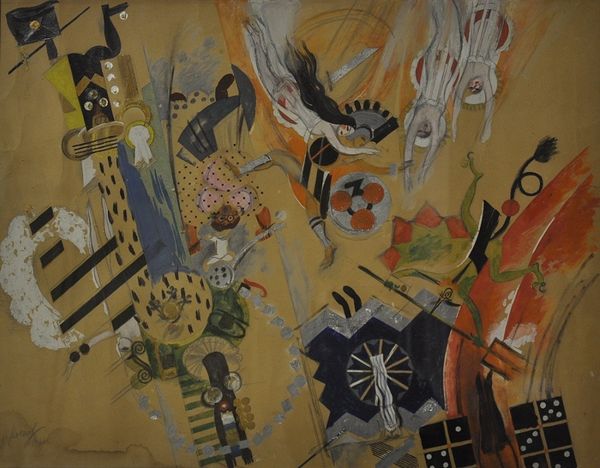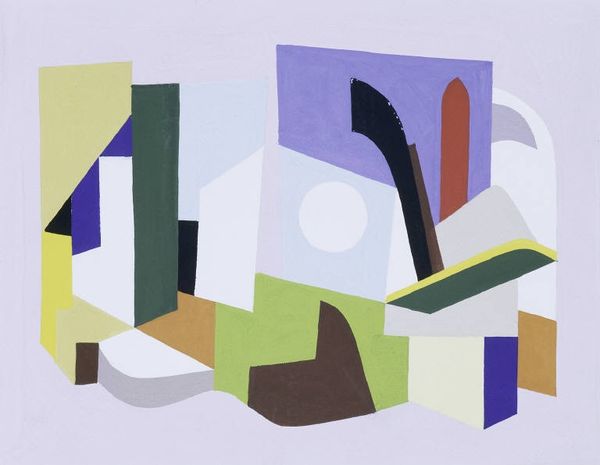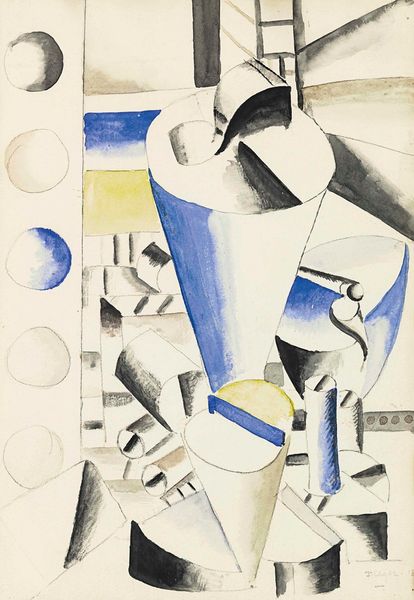
drawing, paper, watercolor
#
drawing
#
cubism
#
landscape
#
figuration
#
paper
#
watercolor
#
geometric-abstraction
#
modernism
Copyright: Gosta Adrian-Nilsson,Fair Use
Curator: I’m immediately struck by the pastel coolness of this watercolor drawing, so different from the usual vibrancy I associate with modernist explorations of landscape. Editor: Exactly. Today, we're looking at Gösta Adrian-Nilsson’s "Komposition med gren". Although undated, its embrace of geometric abstraction clearly positions it within early modernist experiments in redefining space and form. Let's delve into that intersection of technique and material. Curator: It's the imagery that fascinates me. What's a landscape without a clearly defined horizon, or rendered in such a fragmented style? Those scattered leaves... are they symbols of nature in decay, a memento mori embedded in the composition? Editor: I'd argue those fragmented components aren’t about decay, but an active reimagining of landscape, viewed through the lens of Cubism. The watercolor medium itself is critical. Its fluid, translucent qualities allow for the layering of shapes. Consider how Adrian-Nilsson coaxes a sense of depth while maintaining flatness—pushing against the traditional constraints of both landscape and drawing. Curator: Yet, the tree's motif, however stylized, remains potent. For me it suggests a connection to something larger, maybe even something more existential. A tree is symbolic. It is a nexus connecting earth with the divine. The drawing captures this liminality using this particular rendering in the landscape genre, as a metaphor for a larger psychic experience. Editor: And those symbols don't exist in a vacuum. By understanding his creative process and his relationship to the means of production, we uncover connections to broader issues about craft, artistic labor, and the shifting boundaries of the avant-garde. It looks less like the psychic realm and more like modernist workshops as seen and explored by a draughtsman and visual storyteller. Curator: Maybe that inherent duality is the drawing's strength: its ability to ground very earthy concepts of craft in the transcendental realm of symbolism. It has the symbolic charge of growth as well as transformation. It is this contrast which renders it beautiful. Editor: Indeed, this interaction really underlines how analyzing material practices allows one to reveal how such drawing both participates in and shapes cultural attitudes. What is so great about the work on paper in front of us today is that its radical geometry reorders conventional representations, but allows each person their personal point of view.
Comments
No comments
Be the first to comment and join the conversation on the ultimate creative platform.
